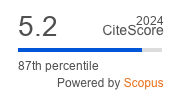Article | Open Access
Reconceptualizing Technological Leadership: A Relational and Dynamic Framework
| Views: | 1221 | | | Downloads: | 692 |
Abstract: This article challenges conventional economic‐based understandings of technological leadership, which often conflate technological leadership with innovation capability or leading status in the technology sector. Instead, it develops a relational and dynamic framework for understanding technological leadership from an IR perspective. It introduces a novel typology differentiating leadership from leading, and followership from imitation and purchase. Technological leadership is defined as the relational and dynamic process through which a state establishes and sustains influence by setting and enforcing rules, standards, and frameworks that guide innovation and collaboration within a technological ecosystem. The formation of technological leadership is a complex and dynamic process, involving interaction between leaders, followers, and the technological environment, shaped by leadership behaviors, followers’ choices, and technological context. This article applies the proposed framework to examine the US–China rivalry for global leadership in artificial intelligence. Through a systematic analysis of AI‐related policy documents from both nations spanning the period from 2016 to 2025, the study elucidates how these two major powers have formulated their respective AI leadership strategies and influenced the evolution of global AI governance. The analysis reveals that US leadership in AI is characterized by a dual‐focused approach that integrates technological advancement with value‐oriented governance, manifesting through three key dimensions: ethical governance frameworks, international collaborative initiatives, and strategic competitive measures. China’s leadership behavior, adhering to the principle of mutual benefit, manifests primarily through infrastructure development and standard‐setting, adopting a development‐centric approach. However, the formation of technological leadership is not solely determined by US and Chinese strategies but is equally influenced by the strategic choices of follower states. Consequently, the ultimate trajectory of the US–China rivalry in AI leadership will predominantly depend on both nations’ capacity to attract and maintain follower support.
Keywords: AI governance; leadership theory; norm‐building; technological leadership; US–China rivalry
Supplementary Files:
Published:
© Yuanyuan Fang, Shenghao Zhang. This is an open access article distributed under the terms of the Creative Commons Attribution 4.0 license (http://creativecommons.org/licenses/by/4.0), which permits any use, distribution, and reproduction of the work without further permission provided the original author(s) and source are credited.


